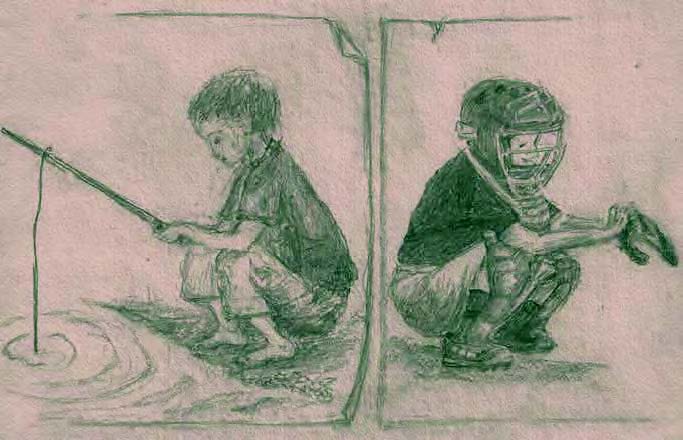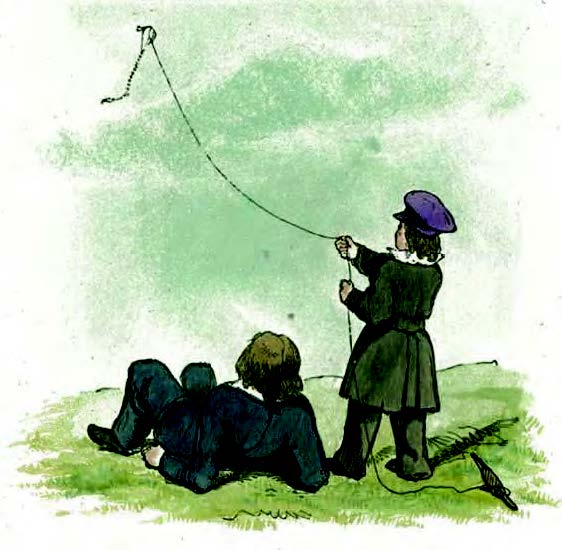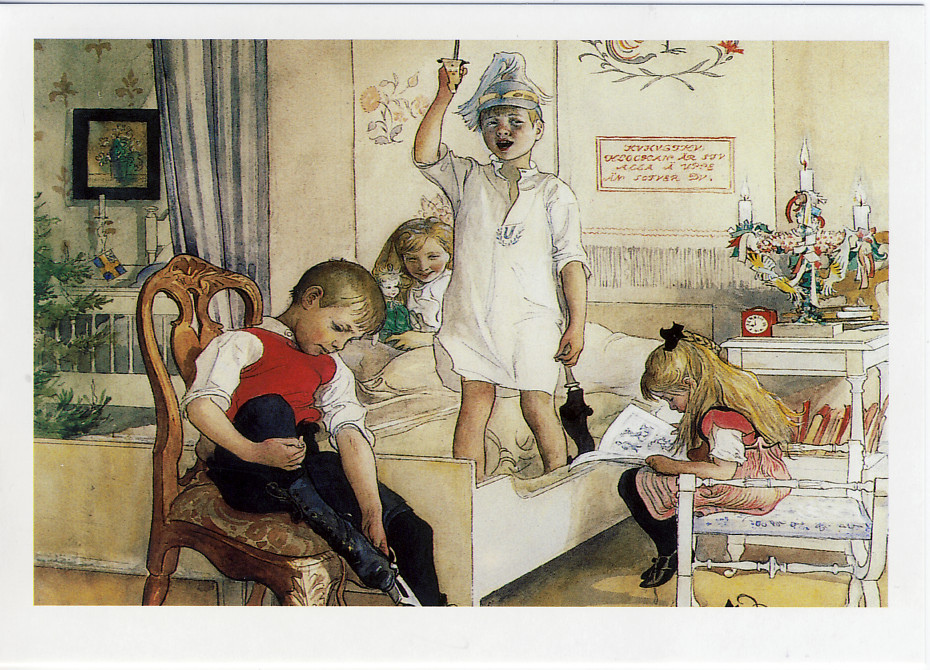
America’s children are being robbed of their childhood. It’s as simple as that. Play used to be the way we discovered ourselves and explored the world around us. Perhaps it was at a sandlot, where–glove in hand–we argued with friends, drew lots, and fanned out to immerse ourselves in a pickup baseball game. Or maybe it was flashlight tag: we chased each other at dusk, laughing and tumbling, bumping and bumbling around. But we connected with each other: with parents, siblings, and friends. Life was physical and immediate. Interaction was direct. We talked, fought, and resolved our conflicts face-to-face.
Modern technology changed all that. We Facebook and text. Watch Vimeo and videos gone viral. Life experiences and learning filter through to us via digital devices. Nowadays, kids are plugged in, often before they can even walk. What more alarming statistical affirmation of this social tsunami can there be than the Kaiser Foundation’s declaration that children are exposed to an average of seven-and-a-half hours of screen media, daily?

Kids relate to each other differently these days. Teenagers woo each other by text. Break up on Twitter. Tease and taunt each other—in some extreme cases to the point of suicide—in cyberspace. The effects of such a hyper-wired life style can be emotionally and physically crippling. Many of our children are bereft of the interpersonal social skills that we learned through common interaction when we were young, and still take for granted.
Many concerned parents have turned to youth sports as a panacea. Young moms and dads scramble to sign their toddlers up for swim lessons and soccer practice, for T-ball and tennis lessons. They hope that their children will learn to interact with other kids in organized play, that sports will teach them motivation and leadership, or, at the very least, get them off the couch and out the door. We hope that in the heat of competition our kids will learn what it takes to strive, drive toward a goal, and succeed. The intention is good. The end-result is surprisingly toxic.
Why do youth sports—which on the surface appear to provide a perfect environment for children to learn life’s lessons and develop the critical social and physical skills they will need in later life—actually hamper our children’s psychic, social, and physical development?
To begin with, kids today are overcoached by controlling, command-oriented youth coaches. As Jenny Levy, head coach of the University of North Carolina’s 2013 National Champion women’s lacrosse team, puts it: “kids are kind of like overbred dogs, mimicking the drills we run in practice. They aren’t wired to think creatively. They do what they know. What’s safe.”
She’s right. All across America coaches I speak with at the youth, high school, college, and professional level, to say nothing of teachers, professors, and job recruiters, echo this sentiment. Kids today cannot think outside the box.
According to Levy, starting at a young age there’s always been an adult telling our kids what to do, where to stand, when to move. “They may be talented, or physically fit, but if I want them to be creative,” she says, “I have to retrain them.”
This is not a sports-specific problem. Kevin K. Parker, professor of bioengineering and applied physics at Harvard, says it takes him years to deprogram students who have been taught in conventional classrooms. Only then can they become innovative, creative thinkers in a laboratory setting. “One of the biggest challenges I have is taking [those] straight-A students and pulling them outside the box. They are raised in a classroom making straight A’s. You ask them into a lab, and you are asking them to tear apart everything they know, everything about their safe zone.”

Can We Drill Our Way to Success?
What it all boils down to is a prevailing parental misconception that kids need to be drilled and trained in a regimented setting from early childhood so that they can acquire and hone the skills they’ll need to succeed on sports fields, in classrooms, and in later life. Yet what our children truly need is a more nurturing, protected childhood. They must be given the opportunity to develop at a slower, more natural pace, shielded from cultural and technological pressures, and protected from the goal oriented, win-at-all-costs mind-set which has infected so many success-crazed parents.
Most importantly, kids need to be left alone. To be, well … kids. Because what they learn when they are left to their own devices, and from each other when they romp around in the backyard, goof off at the park, run through the woods, or frolic at the beach, is what best prepares them for the trials, tribulations, and adjustments they will face as adults.
For decades early childhood teachers, developmental psychologists, and neuroscientists have all championed the critical role of “free play” in the healthy development of children. “One of the best predictors of school success is the ability to control impulses,” say Erika Christakis, an early childhood teacher, and her husband, Nicholas Christakis, a professor of medicine and sociology at Harvard. “Every day where we work, we see our young students struggling with the transition from home to school. They’re all wonderful kids, but some can’t share easily or listen in a group. Some have impulse control problems and have trouble keeping their hands to themselves; others don’t always see that actions have consequences; a few suffer terribly from separation anxiety. We’re not talking about preschool children. These are Harvard undergraduates whom we teach and advise. They all know how to work, but some of them haven’t learned how to play.”
If free play is so critical, if it’s out there among friends (and foes) that children witness and learn about each other’s emotions and develop collaborative skills; if children develop empathy and self-regulatory abilities when they play imaginatively, why are we—as a society—so hell-bent on hyper-structuring our children’s waking non-school hours (if we have the time and can afford it)?
Much of the anxiety that drives society’s unwavering preoccupation with results (winning-at-all-costs) in youth sports springs from a perfectly healthy and natural desire to see our children succeed in sports and in life. We hustle and bustle about, trying to create perfect—or near-perfect—conditions that can help catapult our children into the promised land: a good college, an invigorating career, monetary success, lifelong comfort. Even before their child turns four or five, some parents max out their credit cards, placing her on lacrosse teams, in music camps, in art programs, and everything else they can rationalize as the must-have footholds of her developmental climb to the rarified heights of uber-success.

Winning at What Cost?
Glaring examples of obsessive parental behavior in youth sports are omnipresent. As I strolled through the Great Lawn in Central Park on a beautiful, balmy fall morning with my good friend Brad, whose son I’d coached in soccer for five years, we came upon what is now an all-too-familiar, though still unsettling scene: A cherubic little boy darts back and forth, side-stepping and jumping over rows of cones and ropes that form a perfect ten-by-ten foot square on the grass. He is in mid-flight, executing a high-speed, performance-boosting agility drill. A few steps away the hulking twenty-something professional conditioning coach—who is in charge of this one-on-one $125-per hour training session—nods approvingly. Two mitts, a bat, and a couple of balls lie on the grass a few feet away, untouched.
Brad and I are in the park scouting locations for a documentary we are filming, based on the book Kim John Payne, Scott Lancaster, and I have just written: Beyond Winning: Smart Parenting in a Toxic Sports Environment. Brad frowns at what he sees, then shakes his head. “This is exactly the kind of thing we need to capture on film.”
Seeing this child robbed of his childhood, I’m moved to tears. He’s a professional athlete in miniature. The irony is so poignant. This little boy should not be running drills, cross-training fitness regimens, and dynamic strengthening repetitions at the age of four. He should be exploring the wondrous world he is just now discovering. He should be with his little buddies, chasing after butterflies, staring at an army of ants marching across a block of pavement, or jostling and jumping about, and scrambling up an outcropping of rocks. Better yet fishing or hiking with dad or chopping onions or cycling with mom. What this child needs, craves really, is connection: with the physical universe around him; with his mom, his dad, and little folks who can discover the wonders of the world along with him. Just about the only “dynamic strengthening drill” he should partake of at his age is the kind that occurs naturally when he’s playing tag or climbing a tree.
Societal Pressures Create Bullies and Steroid Users
Among the serious issues that affect kids in youth sports are bullying and steroid use. They are also the result of societal pressures, foisted upon the pliant psyches of developing minds. Televised sports stand out as a clear culprit. Children learn behavior through mimesis. And what they absorb from the sports programming they watch, whether alone or with mom or dad, is often just short of criminal.
Every sport has its darker side. But brawling, beaning opponents, flagrant fouls, and vicious taunting are the norm in America’s professional sporting arenas. It makes for great theater. And for terrible modeling for the country’s youth. For example, ponder the fact that often the first time a child learns the full force of the word “hate” is in the context of his mom or dad’s verbally expressed hatred for a rival sports team from another town or city. Such passionate oppositional thinking sinks deep into impressionable minds.
And what kids see they will act out. Put downs, dissing, hazing, and bullying permeate youth sports. They become the cultural norm. Personally, as parents, we may lay down the law. We punish our kids when they act out or treat their siblings or friends poorly. But then, right in the center of our homes, we have a device of disrespect set up like an altar, in the center of the living room, with all the chairs in the room facing it like church pews. As Kim John Payne often says, “Televisions can be communicators of disrespect, exposing our children to all kinds of inappropriate behavior.”
When you couple this pervasive oppositional mindset with the win-at-all-cost mentality that spawns elitism in youth sports, you are traveling down another rocky social pathway. Only the best kids get to play on travel teams. They are placed on pedestals. Money is poured into programs for the few, while the bulk of America’s kids remain inactive, grow obese, and turn to less physically healthy activities. The cultural cost is astounding.
At the heart of the problem and potentially the solution are the parents.
Parents, and the tens of thousands of parent coaches who supervise the forty million kids who play organized youth sports across America, are often completely consumed by pressure to win at all costs. They impress upon their children and ours that success or failure on the field equates to success or failure in life. They pour thousands of dollars a year (in some cases up to $20,000 per annum) into training their budding young athletes to become superstars. Some maniacally pursue college scholarship awards for their kids in spite of the fact that the numbers belie success. Only two percent of high school child-athletes are awarded NCAA Division 1 Athletic scholarships. What’s more, the average monetary award they receive hovers around $11,000 per athlete. Given the over-all cost of higher education, that is a drop in the family debt bucket.
I’ve stood in the back of the room at the wakes and funerals of several youngsters who died after cycling off steroid use and a cocktail of other performance enhancing drugs, pain killers, and uppers. I’ve reported on a dad who was given a six-year prison sentence after injecting his in-line skater son with human growth hormone and testosterone, starting at the age of twelve. When you think of all the millions of severe injuries (including ligament tears and debilitating concussions) and bullying and parental pressure that cloud the youth sports landscape, you begin to understand why three out of four children quit sports by the age of thirteen. That is just the age when, ironically and sadly enough, they are best suited for the athletic rigors, emotional challenges, and developmental benefits of structured athletic play.

Parents for Change
Parents may be at the heart of the problem, but they are critical to the solution. We can create positive sports experiences for our children. To begin with, introspection is crucial. If we take several steps back, we may be able to see our obsession with our kids’ athletic performances in a different light. Within our own personal sports narratives, we may discover that our parental proclivities are governed by our own sports experiences, buried deep in our childhoods. Unearthed and examined, our own history can help free us to behave more openly and mindfully with our children.
Take a moment. Think over what happened to you when you were a young, impressionable child, when you made your first forays into the world of youth sports. Were your parents too vested in your athletic success? Did they inadvertently sour your playing experiences? Was there an ego-driven coach who berated you when you underperformed? Or a bully who hazed you and other members of your team? Did you quit sports altogether because of an unpleasant experience? Perhaps you failed to achieve what you thought your parents wanted.
If we mine the depth of our childhood sports biographies, we can come to terms with any jarring experiences we may have had and remember, and treasure the golden moments. By doing so and becoming more mindful of what latent feelings influence our present behavior with our own kids, we are more likely to be able to detach ourselves, to slow things down a bit and provide our children with the time and space they need to explore and experience the challenges and joys of sports in their own unique way.
What is heartening for Scott, Kim, and myself is that myriad parents, coaches, and youth sports administrators have told us that they are fed up with what they witness week in and week out on the sidelines and the fields: the parents who berate their kids; who bribe them to score goals or make touchdowns; who ignore serious injuries because they want their children to win. The adults who bicker in the grandstands and can even come to blows, while their little kids cower in embarrassment and fear. Recent incidents of extreme violence—the death of a referee in Utah, punched by a rabid parent, or televised exposure of abusive coaching behavior of the University of Rutgers’ men’s head basketball coach—underscore the critical societal juncture we’ve arrived at.
A groundswell of parents, predominately moms, are searching for alternatives. The challenge will be to find parents and coaches across America who are willing to work to change the way we present youth sports. If we can band together and work to develop more practical, holistic sports activities for all of our children, they will not only develop into strong, capable young athletes, but nimble, creative, socially engaged citizens of the world. ♦
From Parabola Volume 38, No. 4 “Liberation & Letting Go,” Winter 2013-2014. This issue is available to purchase here. If you have enjoyed this piece, consider subscribing.
